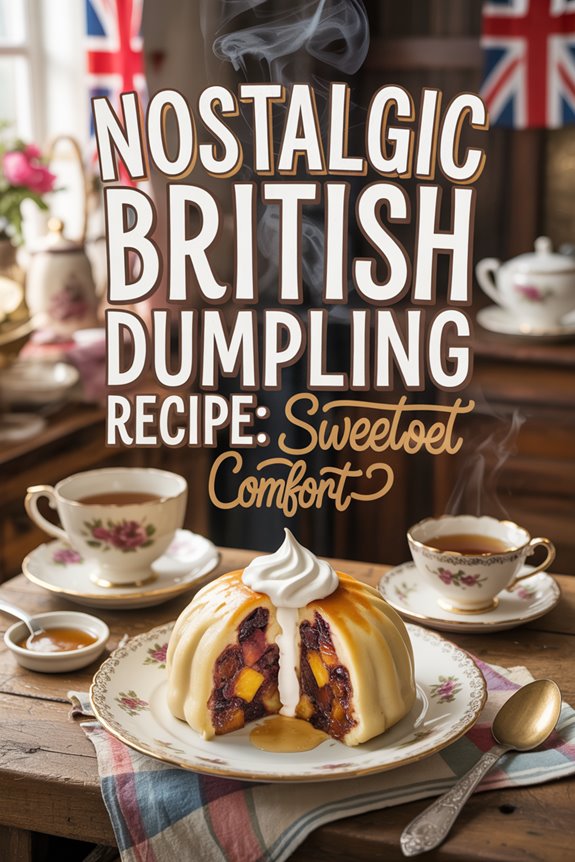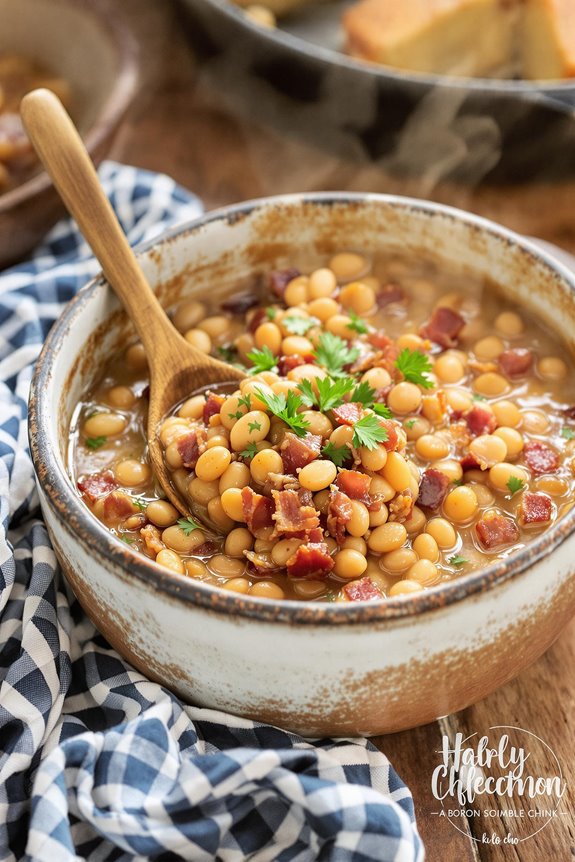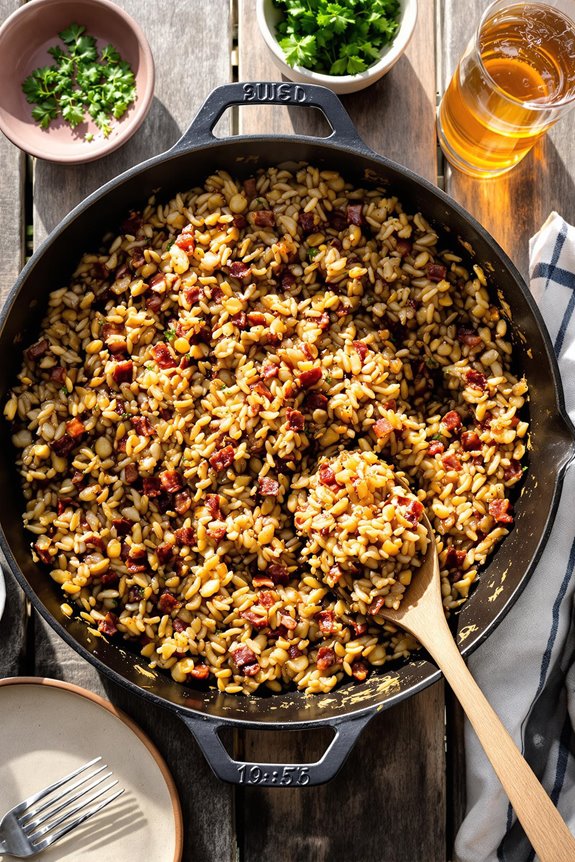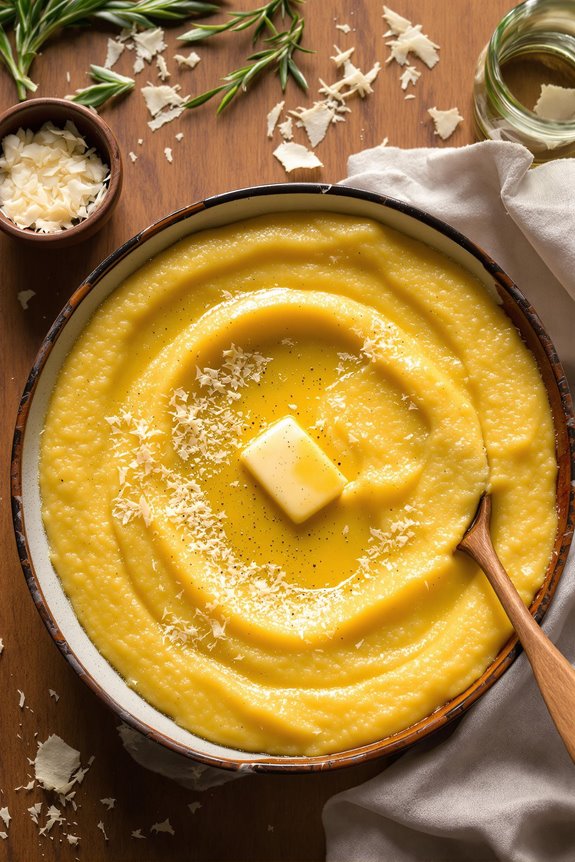Links below are affiliate links. We earn a commission on purchases at no extra cost to you.
Nostalgic British Pudding Dumpling Recipe: Sweet Comfort
Kitchen memories come alive with this traditional British pudding dumpling recipe that transforms humble ingredients into sweet, comforting magic.
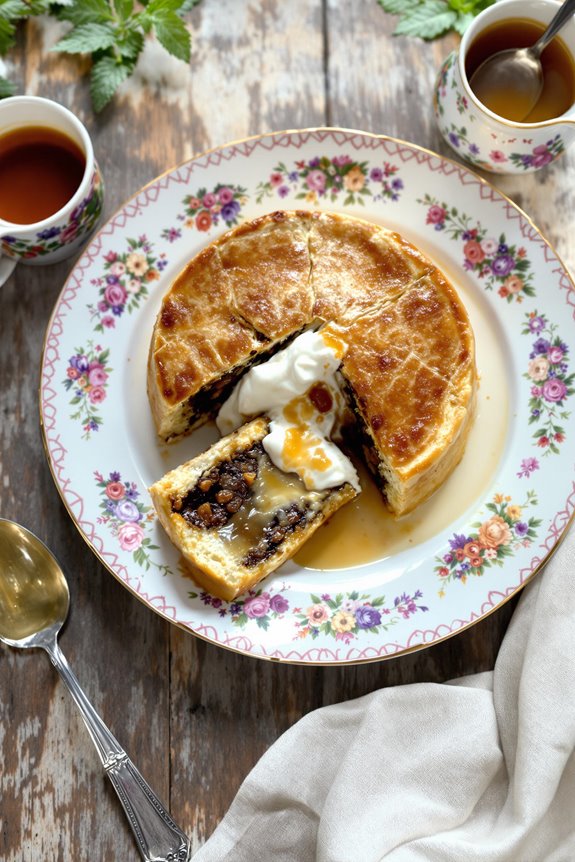
Why You’ll Love these Homestyle British Pudding Dumplings
When I first discovered this traditional British pudding dumpling recipe, I couldn’t believe how such humble ingredients could transform into something so comforting and delicious.
The magic happens as the flour, suet (or shortening), fruits, and spices meld together during that long boil, creating a dense, moist treat that’s utterly satisfying.
You’ll love how the grated apple and carrot add natural sweetness while keeping everything wonderfully moist. The raisins and currants plump up beautifully, and that hint of cinnamon warms every bite.
It’s proper old-fashioned cooking—a bit time-consuming, yes, but the payoff is a dessert that’ll transport you straight to a cozy British kitchen.
What Ingredients are in Homestyle British Pudding Dumplings?
The charm of British pudding dumplings lies in their simple, pantry-friendly ingredients that come together to create something truly special. This traditional recipe relies on basic staples that would have been found in most British households for generations—flour, sugar, dried fruits, and warming spices.
While some might be intimidated by the cooking method (that cloth-wrapped boiling technique is certainly unique!), the ingredients themselves are wonderfully approachable.
- 2 cups all-purpose flour
- 1 cup chopped suet or 1/2 cup shortening
- 1/2 cup sugar
- 1 cup raisins
- 1 cup currants
- 1 teaspoon baking soda
- 2 teaspoons cinnamon
- 1/2 teaspoon salt
- 1 apple with skin, grated
- 1 carrot with skin, grated
- Water as needed (approximately 1/2 cup)
One thing to note about these ingredients is their flexibility. Can’t find suet? Shortening works perfectly fine as a substitute, as mentioned in the recipe.
The grated apple and carrot might seem unusual in a dessert, but they add moisture and natural sweetness without making the dumpling taste like vegetables.
And while the recipe calls for both raisins and currants, you could certainly adjust the ratio or even substitute other dried fruits if you prefer. The key is maintaining that wonderful balance of sweetness, spice, and fruit that makes this pudding dumpling so distinctively British and utterly comforting.
How to Make these Homestyle British Pudding Dumplings
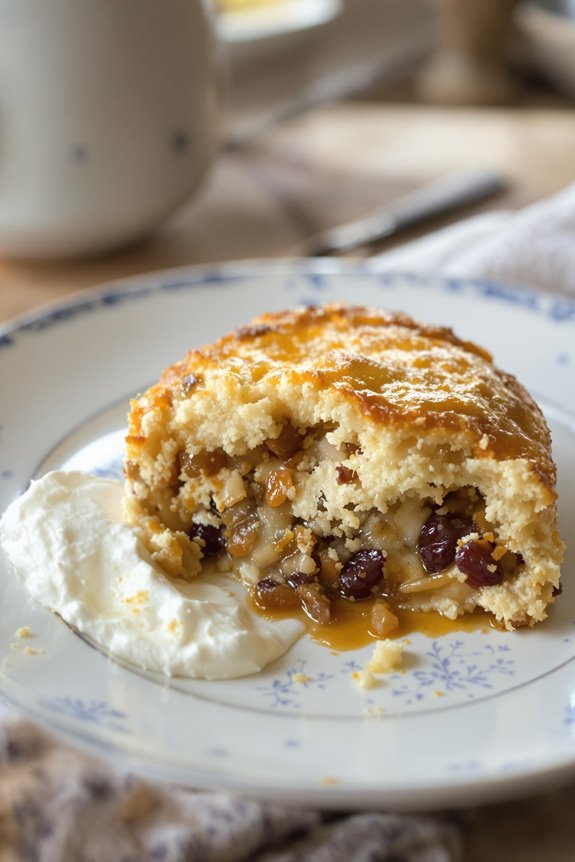
Making a traditional British pudding dumpling starts with creating a rich, sticky dough. In a large bowl, combine 2 cups of flour, 1/2 teaspoon of salt, 1 teaspoon of baking soda, 1/2 cup of sugar, and 2 teaspoons of cinnamon. Work in 1/2 cup of shortening (though traditional recipes might call for 1 cup of suet) until the mixture forms crumbs. This forms the base of your dumpling.
Now for the fruity bits—add 1 cup of raisins, 1 cup of currants, one grated apple with skin on, and one grated carrot. Blend everything thoroughly, then gradually add water, about 1/2 cup total, until you’ve got a sticky dough that holds together.
The cooking method is what makes this pudding so distinctive. You’ll need to bring a large pot of water to boil, with a plate at the bottom to prevent burning (an old cook’s trick that works wonders). Take a clean cloth—an old pillowcase works perfectly—and dip the center in water, wringing out the excess. Dust this damp area lightly with flour, then place your dough in the middle. Gather the sides of the cloth around the dough, leaving just a bit of room for expansion, and tie it securely with string.
This little bundle gets lowered into the boiling water for at least 2 hours. Keep an eye on the water level, topping it up with boiling water if needed.
The final steps transform your boiled bundle into a proper pudding. When the boiling time is up, your dumpling will seem wet and under-baked—don’t worry, that’s normal. Transfer it to a small roasting pan and pop it in a 350°F oven just long enough to brown the outside and dry it slightly. This won’t take long, so watch it carefully.
Once cooled, slice your pudding dumpling into portions and serve with a dollop of whipped cream, canned cream, or a lovely brown sugar sauce for that authentic British touch. For the best results, consider using premium Mediterranean cookware which provides excellent heat distribution for even cooking of traditional puddings. The result? A wonderfully dense, fruity pudding that’s both comforting and deliciously old-fashioned.
Homestyle British Pudding Dumplings Substitutions and Variations
Traditional as this pudding recipe might be, I’m a firm believer that every great recipe deserves a bit of personalization to suit your pantry and preferences.
You can easily swap dried cranberries or chopped dates for the currants, or try mixed dried fruit for a more complex flavor profile. Not a fan of suet? Coconut oil makes a surprisingly delicious alternative that adds a subtle tropical note.
For dietary restrictions, gluten-free flour blends work beautifully here, though you might need to adjust the liquid slightly.
And don’t hesitate to play with spices—a pinch of nutmeg or cardamom alongside the cinnamon creates wonderfully aromatic variations.
What to Serve with Homestyle British Pudding Dumplings
Now that you’ve mastered the art of creating (and perhaps customizing) your pudding dumplings, let’s consider what accompaniments will elevate this classic dessert to truly memorable heights.
I’m partial to serving these dumplings with a generous dollop of fresh whipped cream, lightly sweetened with a tablespoon of powdered sugar and a splash of vanilla.
For something more indulgent, try a warm custard sauce or traditional brown sugar sauce—simply simmer 1 cup brown sugar with 2 tablespoons butter and ¼ cup cream until thick and glossy.
Fresh berries provide a tart contrast that cuts through the dumpling’s rich sweetness.
Final Thoughts
Whether you’ve grown up with this hearty British classic or you’re trying it for the first time, these pudding dumplings carry the soul-warming comfort that’s defined British cuisine for generations.
I’m always amazed by how simple ingredients—flour, suet, fruits, and spices—transform into something so deeply satisfying after their long, gentle boil. There’s something magical about unwrapping that cloth to reveal the steaming, fragrant sphere within. The contrast of textures—the slightly crisp exterior from its brief oven stint and the moist, fruit-studded interior—creates the perfect bite every time. Don’t rush this recipe; the waiting is part of the tradition.

